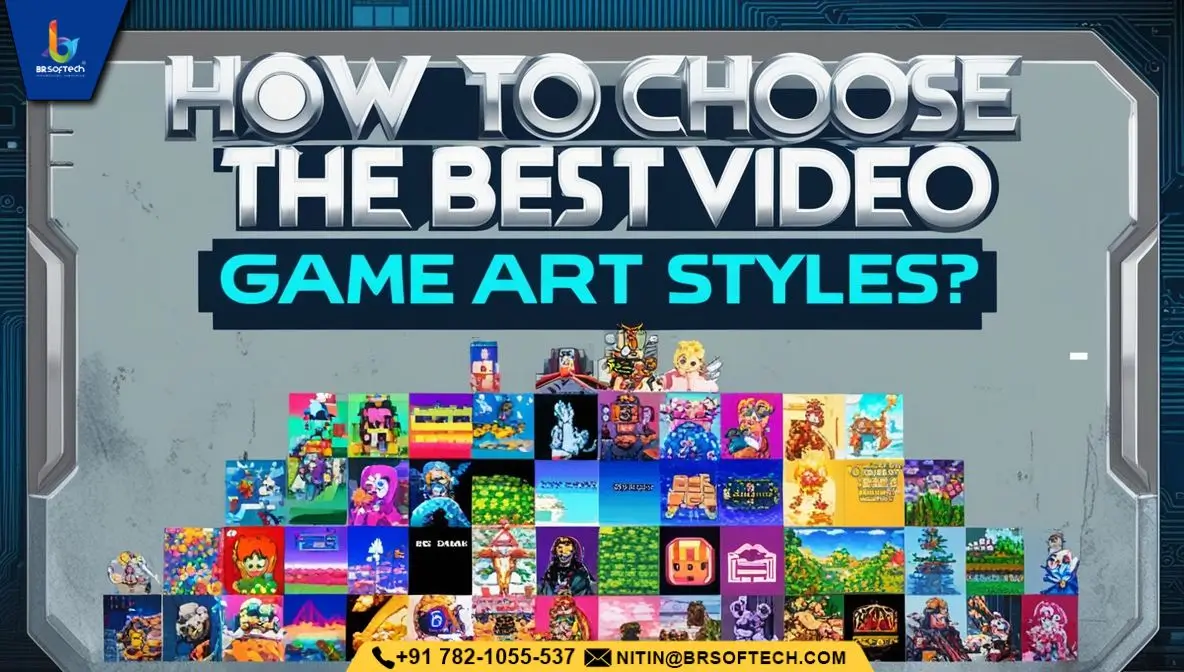Isometric games stand out, quite literally. They are superior to 2D games and require fewer resources compared to 3D games. You get the simplicity of a 2D game clubbed with the depth and perspective of a 3D game. Isometric games have a unique style, and there are numerous titles that have proven to be commercial successes.
If you are a game developer and wish to develop an isometric game, this blog shall dot all the Is and cross the Ts for you.
What is an Isometric Game?
An isometric game tilts the point of view from the gamer’s perspective, and displays the game at any angle between 30 to 45 degrees on both the x and y axes. The result of tilting the POV provides an illusion of experiencing a 3D-like gameplay on a 2D plane.
Developers can ease the modeling and rendering process with isometric games. And these games are far better than the traditional top-down or side-scrolling games. These games offer:
- A better sense of spatial layout
- Easier asset reuse
- Visually appealing environments with layered depth
Also Read:- Roblox Game Development: All You Need to Know
How to Create an Isometric Game?
Creating an isometric game requires a number of steps. From choosing a game engine to exporting and launching your game, the process is lengthy but simple. Let’s start with the chronology.
Step 1: Choosing the Right Game Engine
Being the initial step, it matters a lot when you are beginning to curate an isometric game. We will list down all the game engines and choose according to your project requirements.
- Unity: Ideal game engine for 2D as well as 2.5D games. It fundamentally supports isometric tilemaps.
- Godot: If you want something lightweight, Godot is your go-to game engine. It also supports isometric tilemaps along with custom projection.
- Unreal Engine: Unreal Engine is more of a high-end game engine. If you wish to create visually stunning content with cinematic experiences, this is the ideal fit for you.
- Construct: It is the best game engine if you are into casual web games.
Step 2: Design Isometric Art and Assets
Isometric games require a unique asset creation. These assets need a 2:1 ratio to amalgamate with the gameplay. You can design your art and assets through three of the major ways:
- Draw your sprites using tools like Aseprite or Photoshop
- Render assets from 3D models using the open-source tool Blender or MagicaVoxel
- Use asset packs from platforms like the Unity Asset Store or Itch.io
Isometric games have a grid layout, and you must ensure that your tiles follow the correct isometric grid layout. Sprite layering is another important thing to oversee in this step. Objects appear in the correct visual order because of sprite layering.
Step 3: Build the Isometric Grid System
Unlike other games, isometric games do not use a square or hexagonal tilemap. Instead, they use staggered grids or diamond-shaped tiles. This step requires you to:
- Understand tile positioning, including calculating x/y offsets.
- Set up sorting layers to avoid visual glitches.
- Manage player interaction with tiles.
However, you will find that most game engines offer plugins or an isometric tilemap editor, which simplifies building the isometric grid system.
Step 4: Implement Game Logic
Implementing game logic or building the gameplay comes next once your world is in place. Some of the important areas in developing the gameplay include:
- Character Movement: Use a grid-based walking logic
- Collision and Boundaries: Set up a perimeter where users cannot trespass around blocked tiles.
- Object Interaction: Make the elements in the game, like trees, NPCs, and buildings, interactive.
- Camera Movement: Make sure users can pan and zoom without distorting the isometric angle.
This is the only stage where you add animation and sound effects to your game. Animation and sound design help your world come alive.
Step 5: Test and Polish
One of the important steps of creating an isometric game is playtesting and polishing the game. Another term for it is quality analysis, where you thoroughly check the game mechanics and gameplay. You check the smoothness of the game. Misalignments can result in a less immersive game. Key things that require polishing are:
- Z-sorting and layering issues (e.g., player walking behind a tree)
- Control feedback, especially on mobile devices
- Visual clarity, especially for clickable or walkable tiles
- UI placement, make sure it doesn’t clash with angled elements
Step 6: Launch Your Game
Once you are done with testing and polishing the game, it is time to release it to the audience. You can publish your isometric game on:
- Steam
- itch.io
- Google Play / App Store (for mobile)
- Your own website
Do not forget to add analytics, monetization models, and marketing assets like trailers and landing pages.
Also Read:- Mastering Video Game Level Design: History, Tools, and Best Practices
What are the Popular Games With an Isometric Perspective?
Some people think isometric is a genre of the past; however, the games are still in trend. You may be surprised to know that a good chunk of games lie under the isometric category. Let’s look at some of the popular examples.
Clash of Clans
Developed by Supercell, Clash of Clans is arguably the most popular mobile game of the last decade. It is an online multiplayer game where you have to create a village, build establishments, train troops, and raid other players’ villages.
Hades
Developed by SuperGiant Games, Hades is a popular game that won many awards for its gameplay and art style. It won the Best Game, Artistic Achievement, Game Design, and Narrative award at the 17th British Academy Game Awards.
Plants vs Zombies
Developed by PopCap Games, the Plants vs Zombies franchise is a popular isometric video game with a fun concept. Players are tasked with defending the town against zombies. However, instead of traditional weapons, players use weaponized plants like pea shooters and Venus flytraps to kill zombies.
Divinity: Original Sin 2
Divinity is also a popular isometric video game that garnered positive reviews and nominations for its gameplay. Developed by Larian Studios, it is an RPG game with turn-based combat played from an isometric perspective.
Final Words
Creating an isometric game is both a technical and artistic journey. For video game developers, mastering grid layouts and isometric projections to optimizing textures and lighting plays a crucial role in creating an isometric game. These games not only offer a unique visual experience but also provide developers with a flexible canvas to explore creativity without the heavy demands of full 3D rendering.
Whether you’re building a strategy game, an RPG, or a casual puzzle game, the isometric perspective can elevate your game’s aesthetic and engagement. With the right tools, planning, and attention to detail, video game developers can craft immersive game worlds that resonate with players and stand out in the gaming landscape.
Ready to bring your isometric game idea to life?
Whether you’re aiming for mobile, PC, or web platforms, we’ve got the tools, talent, and experience to make it happen.
Let’s Build Together → Contact Us Now
Frequently Asked Questions(FAQs)
Q. Which game engines are used to create isometric video games? Ans. Several game engines are used to create isometric games. Unity and Unreal Engine are two of the most common engines for isometric game development as they offer seamless flexibility. However, you can also use other game engines like Phaser or Godot to develop isometric perspective games.
Q. What are some popular isometric games in 2025? Ans. Clash of Clans, Plants vs Zombies, Hades, Baldur’s Gate 3, and Age of Kings are some of the most popular isometric games. In fact, Baldur’s Gate 3 was also the Game of the Year in 2023.
Q. Are isometric games 2D or 3D? Ans. None, isometric games are neither 2D nor 3D. While they may look and feel like 3D, they are in fact 2.5D as they serve as the bridge between 2D and 3D. These games feature 2D graphics in a 3D perspective to create a sense of depth.








